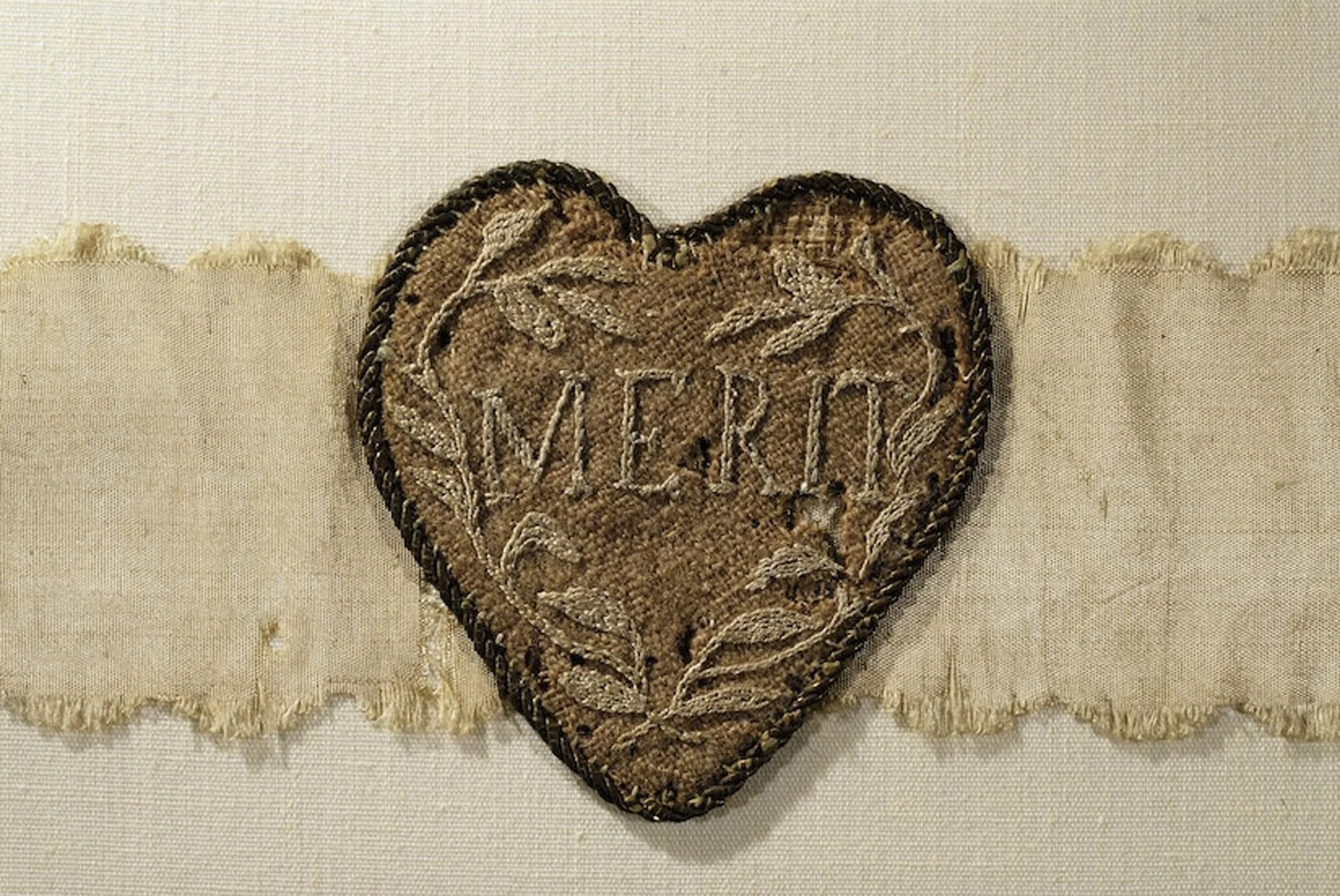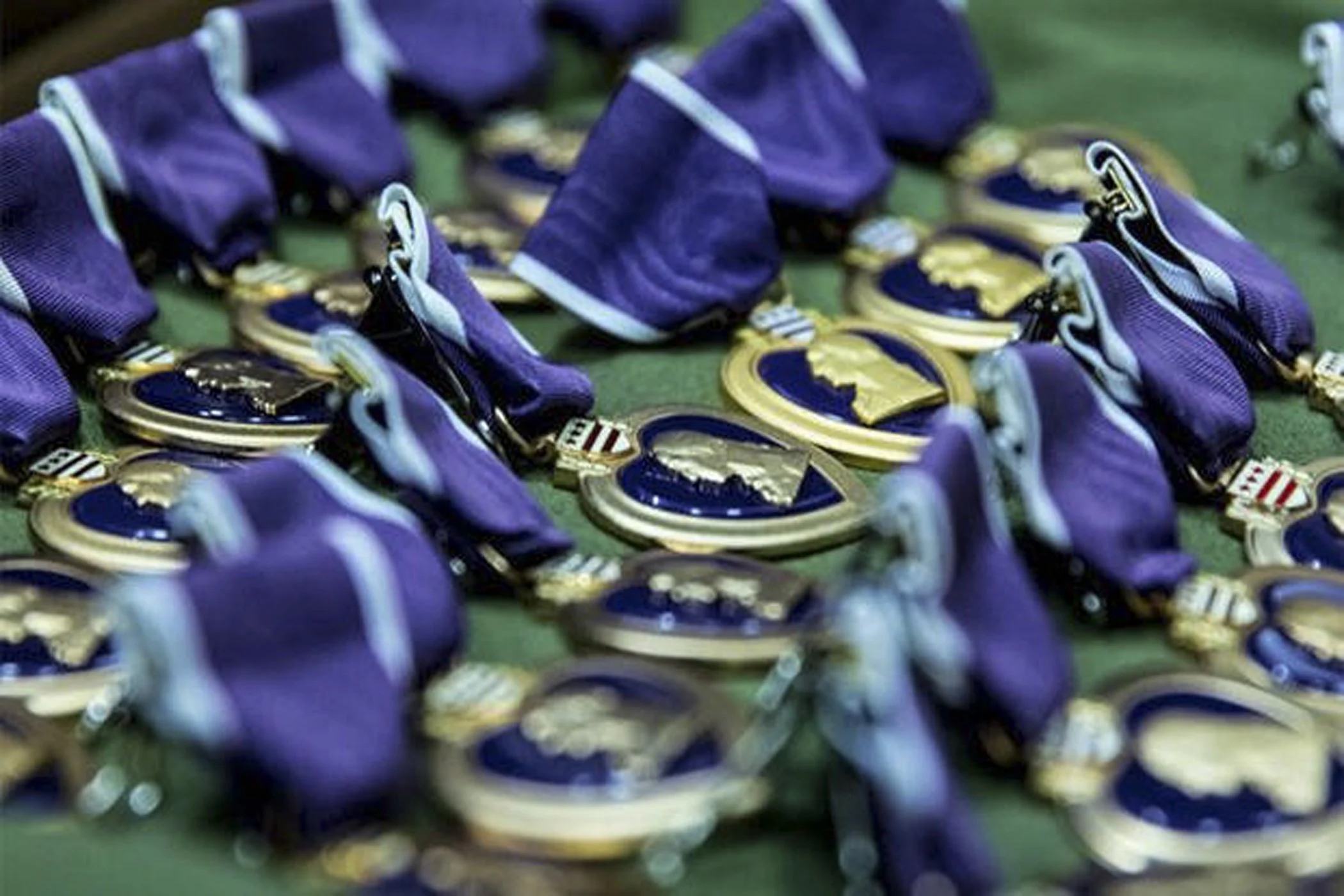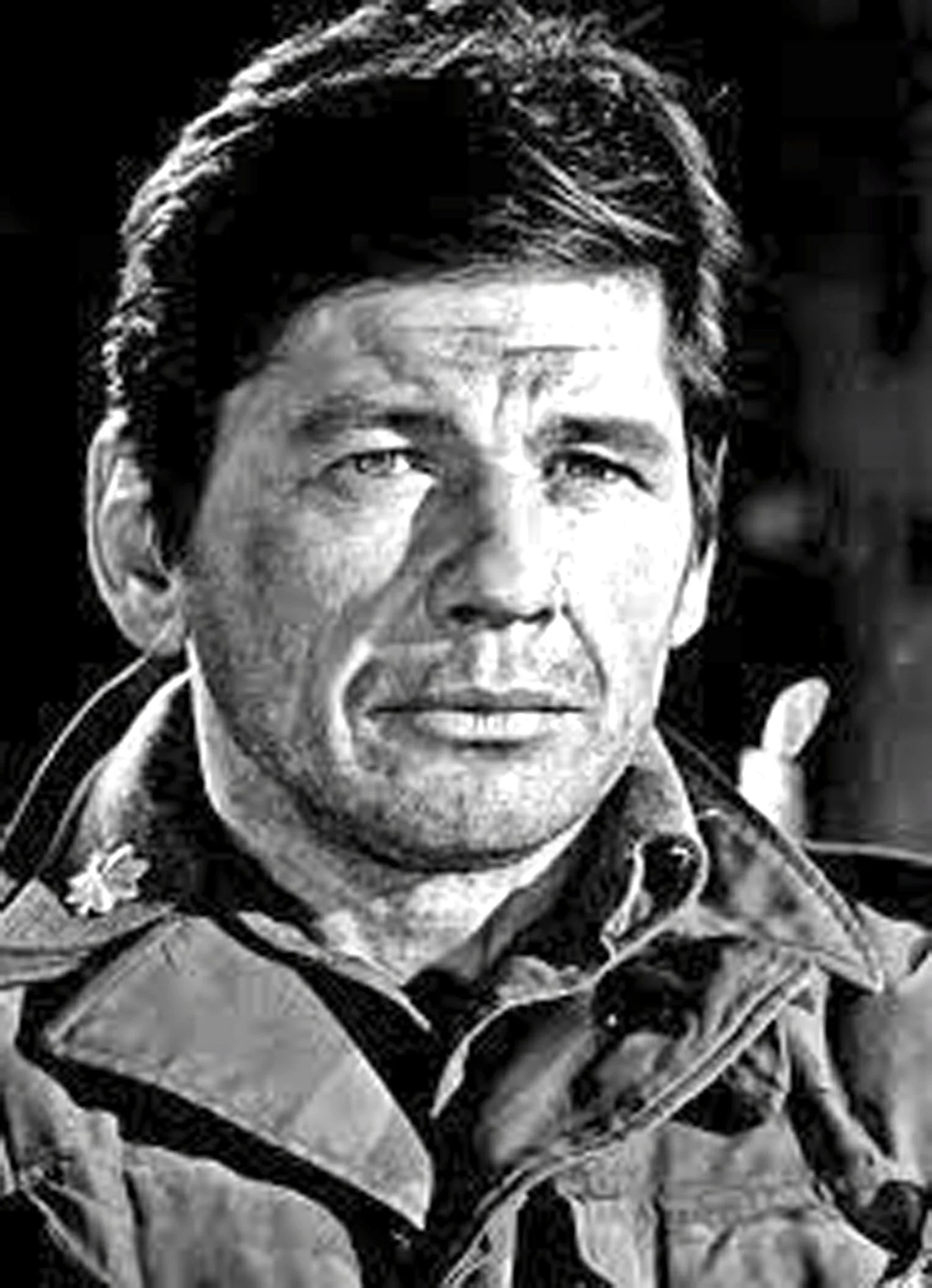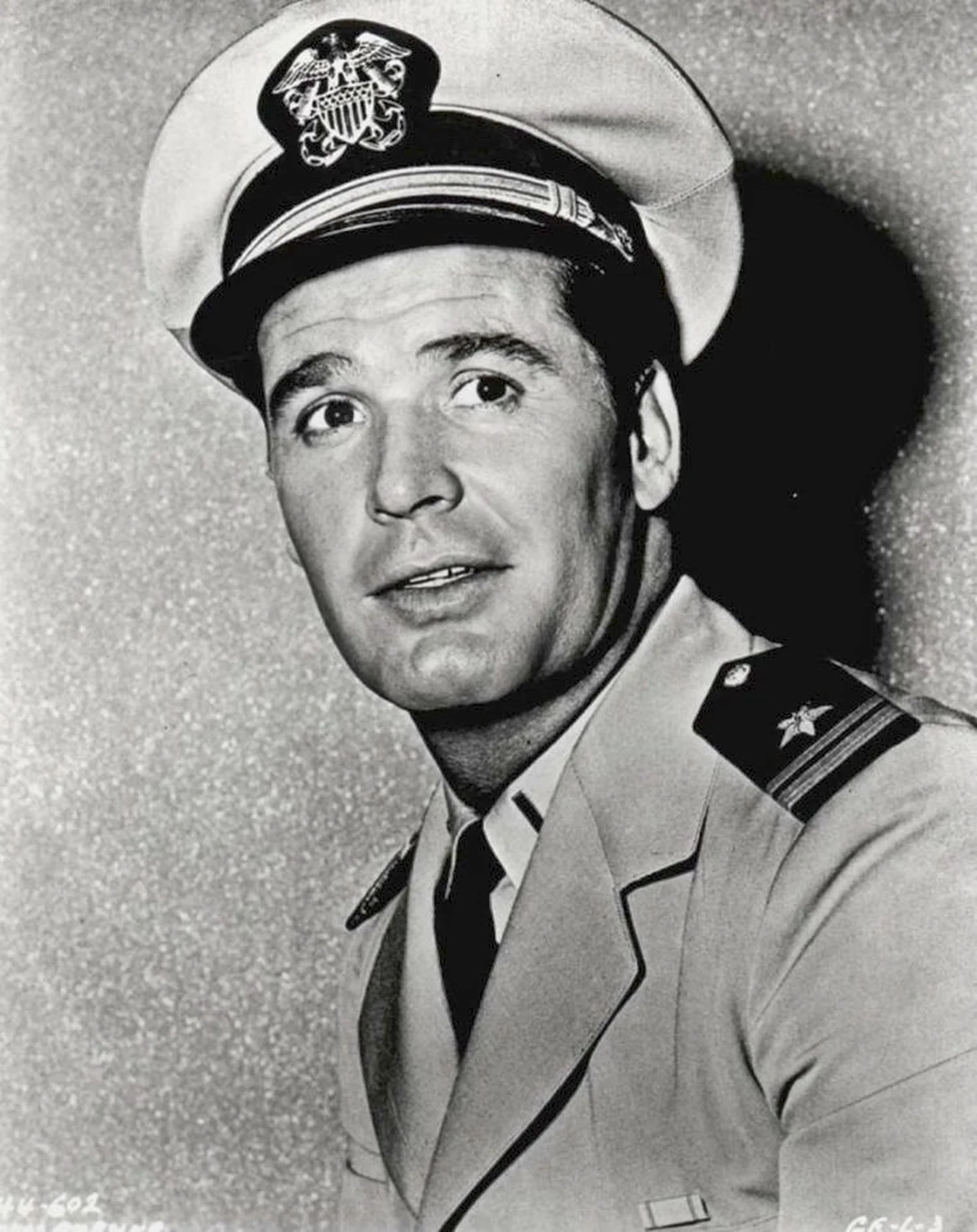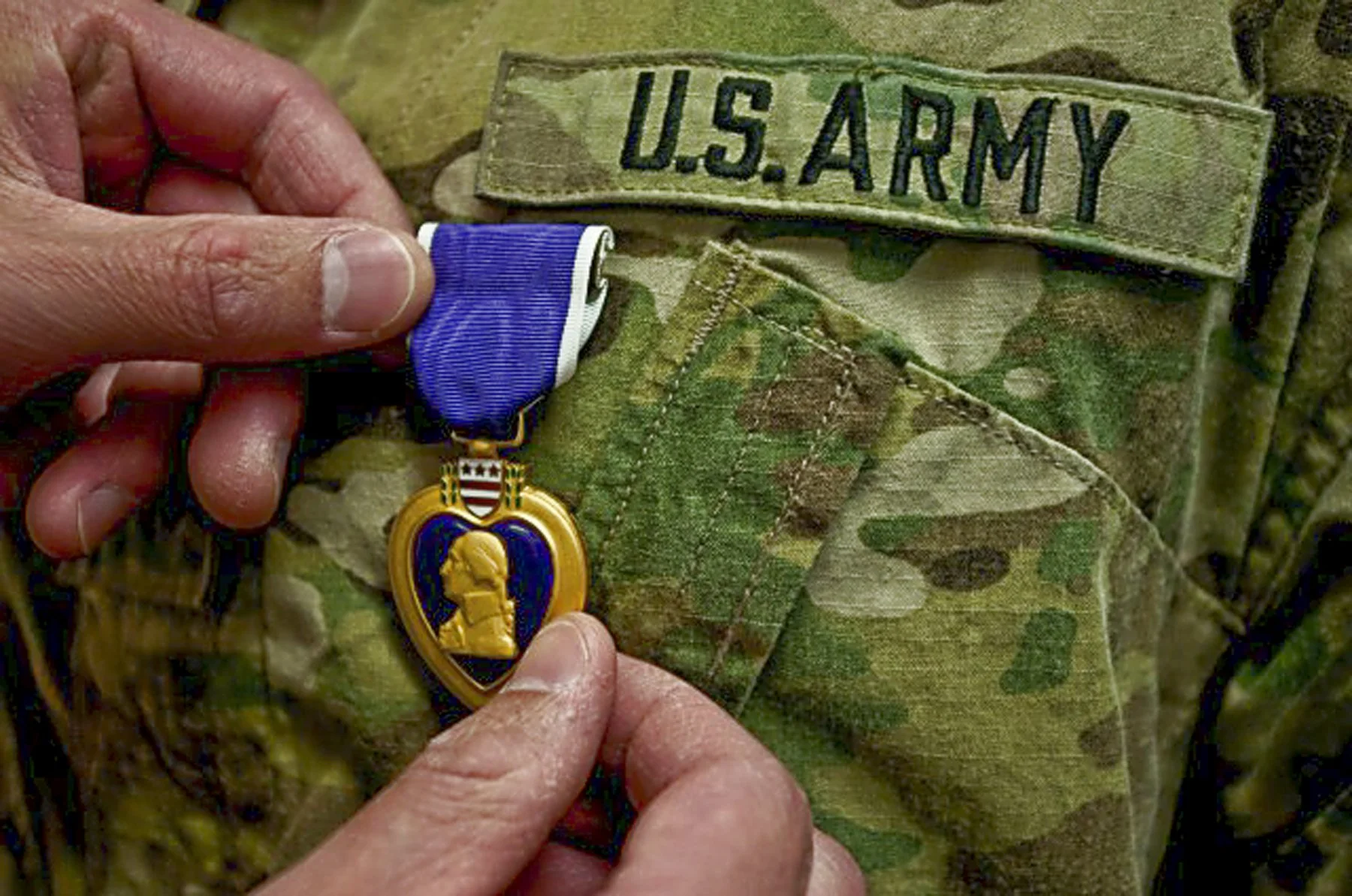National Purple Heart Day is August 7th By Simie Seaman President of the Wilmington Historical Society
The Purple Heart is the oldest active military award in the United States and, like the country it represents, has gone through many changes.
What now is known as the Purple Heart began as the Badge of Military Merit, established by George Washington on August 7, 1782. At that time, and for many decades afterwards, there were very few awards that common soldiers could receive in service of their country. Most awards, decorations, and medals were given to great commanders, aristocrats, or kings. Recognizing that the Continental Army was fighting a tough campaign, supplies were scarce, and pay was low, Washington felt a need to encourage his troops by establishing an award for valor and meritorious service. This established a precedent within awards systems for valor, defined as heroic actions in combat, and merit, which is proper performance of military duties not related to combat. Washington presented the Badge of Military Merit, which consisted of a cloth purple heart to be worn over the left breast, to three sergeants in his army.
It is also worth mentioning that the Purple Heart is the highest award that is
automatically given to any officer or enlisted person as soon as the criteria are met,
meaning there is no proposal or review like other awards for valor or merit. It can also
be awarded multiple times for wounds received on separate occasions.
One U.S. President
Navy veteran John Kennedy is the only U.S. President to have received a Purple Heart, after he sustained a back injury when a Japanese destroyer sunk his patrol torpedo boat near the Solomon Islands during World War II. Incidentally, his brother, Joseph, also received a Purple Heart posthumously for his service in World War II. While Kennedy is the only president to receive a Purple Heart, both President Franklin Delano and Theodore sons received Purple Hearts.
Most of you already know that Purple Hearts are medals awarded to soldiers who have been injured by the enemy while serving in the U.S. military (or posthumously to those killed in combat). But you might not know these famous figures have received the medal.
AUDIE MURPH
Audie Murphy the most decorated MAN OF WAR. He received the purple three times during World War II. He received every combat award for valor available from the Army, including the Medal of Honor as well as the French and Belgian awards for heroism. Murphy served three years of active duty, beginning as a private, rising to the rank of staff sergeant, and finally winning a battlefield commission to 2nd lieutenant. He was wounded three times, fought in nine major battles across Europe and was credited with killing 241 Germans. He was awarded 37 medals and decorations, included the Distinguished Service Cross, the Silver Star (with oak leaf cluster), the Legion of Merit, and the Croix de Guerre (with palm).
The battle that earned Murphy the Medal of Honor, and which ended his active duty, occurred during the last stages of the Allied victory over the Germans in France. Murphy acted as cover for the infantrymen during a last desperate German tank attack. Climbing atop an abandoned U.S. tank destroyer, he took control of its .50-caliber machine gun and killing 50 Germans, stopping the advance but suffering a leg wound in the process.
Upon returning to the states, Murphy was invited to Hollywood by Jimmy Cagney, who saw the war hero’s picture on the cover of Life Magazine. In 1950 Murphy was awarded an acting contract with Universal Pictures. In his most famous role, he played himself in the monumentally successful to Hell and Back.
CHARLES BRONSON
You know Charles Bronson from his roles in Once Upon a Time in the West, The Magnificent Seven, The Dirty Dozen and Death Wish, but did you know he probably never would have become an actor if it weren’t for the military? In 1943, Charles enlisted in the Army Air Corps where he started out working as a truck driver, but eventually became a tail gunner in a B-29. After the war was over, he was awarded a Purple Heart for an injury he received in the service and used the GI Bill to study acting, which eventually helped him become the action hero we are all familiar with.
JAMES GARNER
Those familiar with The Rockford Files or Maverick certainly know who James Garner is. What you might not know is how much time he dedicated to the Armed Forces. When he was just 16 years old, Garner joined the Merchant Marines near the end of WWII, though he didn’t do particularly well there given that he suffered from seasickness. He later served in the National Guard for seven months before joining the Army and serving in the 24th Infantry for 14 months during the Korean War. While in the Army, James was injured twice. The first time he was hit in the hand and face by shrapnel from a mortar round. The second time he was shot in the buttocks by U.S. fighter jets as he dove into a foxhole. As a result, he received two Purple Hearts, although he didn’t receive the second one until 32 years later.
OLIVER STONE
Yes, the famous director not only made a film about someone with a Purple Heart and a Bronze Star for service in Vietnam; he has both medals from his time in the war as well. Like Kovic, he willingly signed up for the Armed Forces, dropping out of Yale to do so, and he even requested combat duty in Vietnam. Stone was injured twice in the war and received the Purple Heart after he was shot in the neck.
As you might have guessed, Platoon was based largely on the director’s experiences in Vietnam.
ROD SERLING
If you’re a fan of The Twilight Zone, then you might be interested in knowing that it might never have been created if Rod Serling was never injured in WWII. The future writer was eager to enroll in the war to help fight the Nazis, but he was instead sent to the Philippines to fight the Japanese. He was put into one of the most dangerous platoons in the area, nicknamed “the death squad” for the high number of casualties suffered in the group. Serling was lucky enough not to be killed in combat, but he hardly came out unscathed. He was injured a few times in battle, but more dramatic was the severe trauma he experienced by serving in such a violent area. As a result, he was plagued by nightmares and flashbacks for the rest of his life.
The events he experienced reshaped his world view, and with them he was inspired to create The Twilight Zone and write many of the show’s most famous episodes.
JAMES ARNESS
James Arness played Marshal Matt Dillon in Gunsmoke over five decades, as the show spanned from 1955 to 1975 and then there were five more made-for-TV movie follow-ups shot in the 1980s and '90s. Arness (or Aurness before he started acting) enrolled in the U.S. Army in 1943. He wanted to be a fighter pilot, but with a height of 6’7”, there was no way that was going to happen, as the maximum height of pilots at the time was 6’2”, so instead he served as a rifleman. Unfortunately, his height singled him out to be the first off the boat to test the water depth for the other men, leaving him to be the first target for the enemy. As a result, Arness was injured less than a year into his service during an invasion on Anzio, Italy, when he was shot in the right leg.
On the upside, his time in the hospital led to his work in television … eventually. That’s because the nurses kept insisting that with his booming, deep voice, Arness ought to work on the radio. After he returned home, he got a job as a disc jockey in Minneapolis, which is where he finally decided to try his luck as an actor in Hollywood.
Despite having multiple surgeries and almost a full year of physical therapy, Arness was still bothered by his injury years down the line. Reportedly, he hurt intensely on the set of Gunsmoke when mounting his horse.
BONUS: SERGEANT
One more veteran with a Purple Heart, who is certainly noteworthy, even if he's not a human, is Sergeant Stubby, our favorite K9 war hero and the most decorated dog of WWI. Stubby received his Purple Heart for an injury caused by shrapnel from a German grenade thrown into the trench he was in. After recovering, he returned to the trenches to help his fellow soldiers.
Bio
Simie Seaman, enthusiast amateur photographer, history buff and collector of beautiful things.
She is President of the Wilmington Historical Society
email: simieseaman368@gmail.com
310-835-8177


